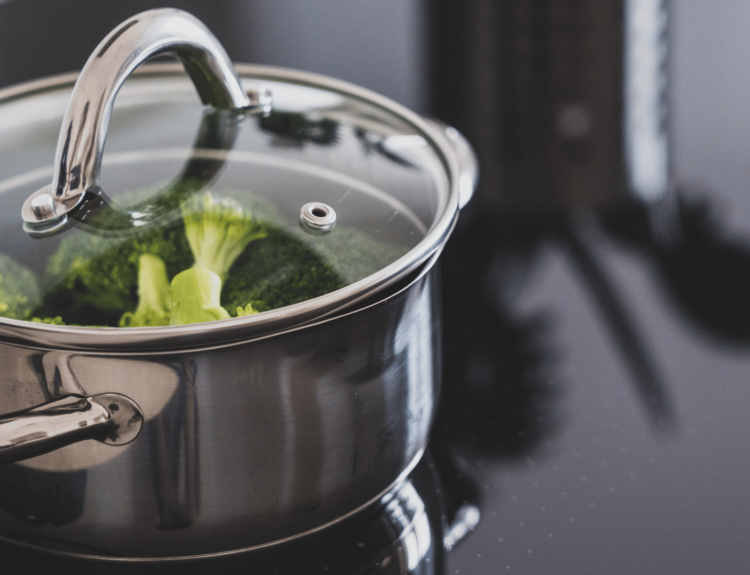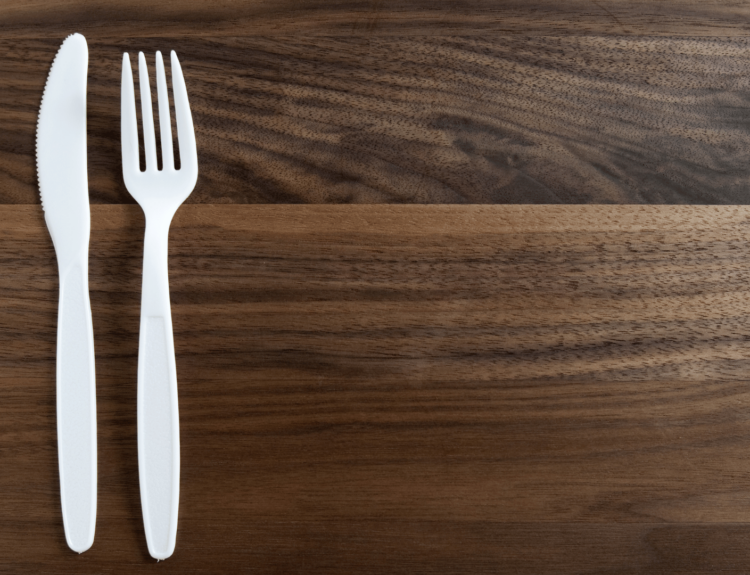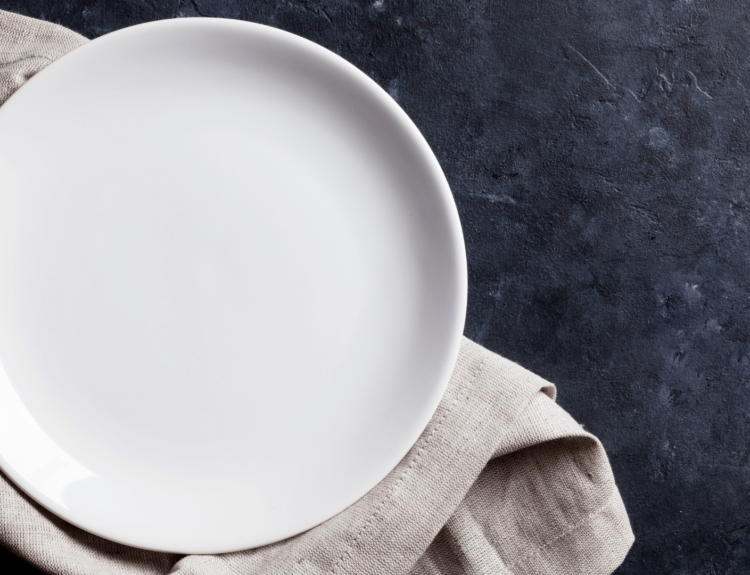Lead is a toxic heavy metal that has been used for centuries in various applications, including cookware, drinkware, and dinnerware. While lead has many useful properties, its presence in these everyday items can pose serious health risks. In this blog, we will explore the origin and properties of lead, its common uses in history, and the prevalence of lead in kitchenware. We will also discuss the health risks associated with lead exposure, how lead can get into food and drinks, and how to recognize lead in your dinnerware. Additionally, we will provide tips for choosing safe alternatives to lead-based cookware, precautions to take with suspected lead cookware, and address common concerns about antique glassware, imported glassware from China, and lead in crystal glassware. By understanding the risks associated with lead in cookware, drinkware, and dinnerware, we can make informed decisions to protect ourselves and our families.
Understanding Lead and Its Usage
Lead is a heavy metal that has been used for centuries due to its unique properties. It is often found in glassware and ceramics, where it is used to add strength, durability, and aesthetic appeal. Lead oxide, in particular, is used in the decoration of glassware, which can lead to lead contamination if not properly assessed. While lead has been historically used in a wide range of items, there is growing concern about its presence in cookware, drinkware, and dinnerware, as it is a potential source of lead exposure.
Origin and Properties of Lead
Lead, like other heavy metals, is a natural element found in the Earth’s crust. It has been used for centuries due to its malleability, low melting point, and resistance to corrosion. Lead oxide, commonly known as lead glass, is added to glassware to create vibrant colors and intricate designs. However, lead oxide is a toxic substance, and if ingested or inhaled, it can lead to lead poisoning. The addition of lead in glassware and ceramics for decoration has raised concerns, as it can leach into food and drinks, posing a risk to human health. Therefore, understanding the origin and properties of lead is crucial in identifying potential sources of exposure.
Common Uses of Lead in History
Lead has a long history of use in various applications, including glassware, ceramics, and decorative items. In the past, lead was frequently used in glassware to achieve intricate designs, vibrant colors, and a lustrous finish. Vintage glassware, often found in flea markets or passed down through generations, may contain lead-based glazes or pigments. Similarly, ceramics, such as plates, bowls, and mugs, may also contain lead in their glazes. The presence of lead in glassware and ceramics has raised concerns about potential lead exposure, as lead can leach into food and drinks, especially when these items are old, damaged, or improperly glazed. Therefore, it is important to be aware of the lead content in kitchenware, drinkware, and dinnerware to minimize the risk of lead poisoning.
Lead in Cookware, Drinkware, and Dinnerware
While lead has been phased out of many consumer products, it can still be found in some cookware, drinkware, and dinnerware items. The prevalence of lead in kitchenware, especially vintage glassware and ceramics, is of particular concern. Identifying lead-contained cookware and dinnerware is essential to ensure the safety of your meals. In this section, we will discuss the prevalence of lead in kitchenware, how to identify lead-contained items, and the potential dangers of using lead-based cookware and dinnerware.
The Prevalence of Lead in Kitchenware
Lead can be found in various types of kitchenware, including cookware, drinkware, and dinnerware, especially in items that were produced before lead regulations were put in place. Vintage glassware, ceramics, and kitchenware are of particular concern, as they may contain lead-based glazes, pigments, or decoration. The presence of lead in kitchenware is a potential source of lead exposure, as lead can leach into food and drinks, especially if the items are old, damaged, or improperly glazed. Therefore, it is important to be aware of the potential presence of lead in kitchenware and take necessary precautions to minimize exposure to this toxic heavy metal.
Identifying Lead-Contained Cookware and Dinnerware
It is important to be able to identify kitchenware that contains lead to ensure the safety of your meals. Testing vintage glassware, ceramics, and kitchenware for lead content is essential in assessing the risk of lead contamination. Lead test kits are available for home use and can help you determine if your kitchenware contains lead. These kits typically involve using a swab to test for lead, which changes color in the presence of lead. However, it is important to note that false positives can occur, so it is best to follow up with a professional laboratory test if you suspect lead contamination. By identifying lead-contained cookware and dinnerware, you can take appropriate measures to reduce the risk of lead exposure.
The Dangers of Using Lead-Based Cookware and Dinnerware
Using lead-based cookware and dinnerware can pose significant health risks. Lead is a toxic heavy metal that, if ingested, can lead to lead poisoning. The risk of lead poisoning is especially high when acidic or salty foods are cooked or stored in lead-containing kitchenware. Prolonged exposure to lead from lead-based cookware and dinnerware has been linked to a range of health problems, including developmental issues, organ damage, and neurological disorders. Therefore, it is important to avoid using lead-containing cookware and dinnerware to protect your health and the health of your loved ones.
Health Risks Associated with Lead Exposure
Exposure to lead, even in small amounts, can have serious health consequences. In this section, we will explore the short-term and long-term effects of lead poisoning, including its impact on various organs and systems in the body. Understanding the health risks associated with lead exposure is crucial in recognizing the importance of avoiding lead-contained kitchenware, drinkware, and dinnerware, and adopting safe alternatives to protect ourselves and our families.
Short-term Effects of Lead Poisoning
Short-term lead poisoning can lead to a range of symptoms, including abdominal pain, nausea, headaches, and irritability. Children are particularly vulnerable to the effects of lead poisoning, which can interfere with their cognitive development, behavior, and growth. In adults, short-term exposure to lead can cause fatigue, loss of appetite, and muscle weakness. While short-term lead poisoning symptoms may subside once exposure is reduced, ongoing exposure to lead can lead to long-term health effects. Therefore, recognizing the symptoms of lead poisoning and taking steps to minimize exposure is crucial in protecting our health.
Long-term Effects of Lead Poisoning
Long-term exposure to lead can have serious consequences for our health. Lead poisoning has been linked to a range of long-term effects, including kidney damage, high blood pressure, anemia, and impaired cognitive function. Children exposed to lead may experience developmental delays, learning difficulties, and behavioral problems. Additionally, lead contamination in adults has been associated with fertility issues, cardiovascular disease, and decreased kidney function. It is important to note that lead exposure does not have a safe threshold, and even low levels of lead can have harmful effects over time. Therefore, minimizing exposure to lead is essential in safeguarding our long-term health.
How Lead Gets into Food and Drinks
Lead can get into food and drinks through a process called leaching, wherein lead particles are released from kitchenware and contaminate the items being prepared, stored, or served. Understanding how lead gets into food and drinks is crucial in identifying potential sources of lead contamination in our meals. In this section, we will explore the leaching of lead from kitchenware and the risk of lead contamination in cooked meals.
Leaching of Lead from Kitchenware
Leaching is the process by which lead particles are released from kitchenware, such as glassware, ceramics, and glazes, and contaminate food and drinks. Vintage glassware, ceramics, and kitchenware may contain lead-based glazes, pigments, or decoration, which can leach lead when in contact with acidic or salty foods. The risk of lead contamination in cooked meals is influenced by the presence of lead in kitchenware, as well as factors such as lead content, age of kitchenware, and lead concentration. Therefore, it is crucial to be aware of the potential for lead leaching in kitchenware and take necessary precautions to minimize exposure to lead in our meals.
Risk of Lead Contamination in Cooked Meals
Cookware, drinkware, and dinnerware with lead content can lead to lead contamination in cooked meals. When food is cooked, lead can leach from kitchenware and contaminate the food, increasing lead levels in the meal. This is of particular concern when acidic or salty foods are cooked or stored in lead-containing kitchenware. Heavy metals, including lead, can accumulate in the body over time and pose health risks, especially for children, who are more vulnerable to the effects of lead poisoning. Therefore, understanding the risk of lead contamination in cooked meals and adopting safe alternatives is essential for protecting our health.
Recognizing Lead in Your Dinnerware
Being able to recognize lead in your dinnerware is crucial in ensuring the safety of your meals. In this section, we will discuss the physical signs of lead in kitchenware, how to tell if glass is lead, and how to test for lead in your kitchenware. By being able to identify lead in your dinnerware, you can take appropriate measures to reduce the risk of lead exposure and protect yourself and your loved ones.
Physical Signs of Lead in Kitchenware
Lead contamination in kitchenware can manifest in various physical signs that can help identify its presence. For glassware, a rainbow or iridescent sheen on the surface can be an indication of lead content. Additionally, abrasion or wear on the surface of glassware, such as scratches or chips, can also reveal lead underneath. When it comes to ceramics, intricate designs, especially if they contain lead-based glazes, may indicate potential lead contamination. Being aware of these physical signs can help you determine if your kitchenware contains lead and take appropriate action to minimize exposure.
Testing for Lead in Your Kitchenware
Testing for lead in your kitchenware is an important step in determining if it contains lead and assessing the risk of lead exposure. Lead test kits are available for home use and can help you identify lead contamination in your kitchen items. However, it is important to note that false positives can occur with these test kits, especially if the item being tested has been in contact with other lead-containing substances, such as old leaded paint. In such cases, it is recommended to follow up with a professional laboratory test for a more accurate assessment of lead content. Hazard assessment is crucial in identifying potential sources of lead exposure in your kitchenware and taking appropriate measures to protect your health.
Safe Alternatives to Lead-Based Cookware
Given the potential health risks associated with lead in cookware, drinkware, and dinnerware, it is important to consider safe alternatives. In this section, we will discuss lead-free brands and products, as well as provide tips for choosing safe cookware and dinnerware. By opting for lead-free options and making informed choices, we can minimize our exposure to lead in the kitchen and ensure the safety of our meals.
Lead-Free Brands and Products
When choosing kitchenware, drinkware, and dinnerware, it is important to look for lead-free brands and products. Many reputable manufacturers offer lead-free options, which can significantly reduce the risk of lead exposure. Glassware made from lead-free materials, such as soda-lime glass or borosilicate glass, is a safe alternative to lead-containing glassware. Similarly, ceramics and dinnerware made from lead-free glazes provide a non-toxic option for serving meals. By choosing lead-free brands and products, you can minimize the risk of lead exposure in your kitchen and ensure the safety of your family.
Tips for Choosing Safe Cookware and Dinnerware
When selecting kitchenware, drinkware, and dinnerware, consider lead-free options to minimize exposure. shoot for lead-free glassware, ceramics, and dinnerware to ensure safety. Choosing kitchenware made from lead-free materials is crucial for safety.
Precautions to Take with Suspected Lead Cookware
When handling suspected lead cookware, consider using at-home lead test kits for validation. Always use ceramic ware or glass containers for food and drinks. Be mindful of lead glass and avoid storing acidic liquids in them. Next time you buy cookware, check for lead-free labels and prioritize quality.
Proper Handling of Suspected Lead Cookware
When using suspected lead cookware, take precautions to minimize lead exposure. Avoid cooking acidic or salty foods in such cookware, inspect it regularly for signs of lead contamination, and use lead test kits to check for lead concentration. Minimize abrasion and ensure proper ventilation during use to reduce exposure.
Disposal of Lead-Contained Cookware and Dinnerware
Properly disposing of lead-contained items is crucial. Contact local hazardous waste centers for guidance, and never donate or sell these items. When handling them, take care to prevent abrasion, wearing gloves and a mask. If uncertain, seek professional assistance to ensure safe disposal.
Is Antique Glassware Safe for Use?
Antique glassware can be a beautiful addition to your collection, but it’s important to consider the potential risks associated with using these items. One concern is the presence of lead in antique glassware, which was commonly used in the past to add brilliance and weight to the glass. Lead can leach into food and beverages, posing a health risk if ingested.
To determine if your antique glassware is safe for use, there are a few things you can do. First, check for any signs of wear or damage on the glassware. Cracks or chips can increase the likelihood of lead leaching into your food or drinks. Next, you can perform a simple home test using a lead testing kit. This will help you identify any lead present in the glassware.
If you find that your antique glassware does contain lead, it’s best to avoid using it for food and beverage storage. Displaying these pieces as decorative items instead can reduce the risk of exposure.
Remember, while antique glassware may hold sentimental value and be aesthetically pleasing, it’s essential to prioritize your health and safety when considering its use.
The Risk of Lead in Antique Glassware
When considering antique glassware, it’s important to be aware of the potential risks associated with lead exposure. Vintage glassware, due to intricate designs, may contain lead, including lead oxide, a toxic substance. Caution should be exercised when purchasing from flea markets or street vendors to avoid false positives when testing for lead.
Safety Measures with Antique Glassware
When using antique glassware, consider these safety measures. Use it for decoration to avoid lead exposure and hand wash to prevent leaching. Limit its contact with acidic substances, store it away from children, and educate others about the associated risks.
Is Imported Glassware from China Safe?
When it comes to glassware, especially imported from China, many people have concerns about the safety of their products. This is understandable because there have been instances where imported glassware contained harmful substances such as lead. But is all imported glassware from China unsafe? Let’s dive deeper into this topic to find out the truth.
Guidelines for Using Imported Glassware
When using imported glassware from China, always ensure lead-free certifications are provided. Check for lead content to guarantee safety. Educate others about the risk and store glassware away from food. Dispose of glassware if lead levels are unsafe.
How Lead-Free is Crystal Glassware?
Crystal glassware is often associated with elegance and sophistication. But how lead-free is it? Lead can be found in certain types of crystal glassware, posing potential health risks when used for drinking. In order to ensure safety, it’s important to look for lead-free crystal glassware options that are labeled as such. This will help protect you and your loved ones from the dangers of lead exposure.
The Manufacturing Process of Crystal Glassware
Crystal glassware production avoids lead by using potassium, zinc, and barium. However, lead is added for decoration, posing a risk. Intricate designs in crystal decanters may contain lead. The rainbow effect can indicate lead presence. Using lead test kits is crucial to verify lead concentration.
Verifying Lead-Free Crystal Products
When selecting drinkware, consider purchasing glass or ceramic products instead of those made from metal or non-stick materials. Be cautious of common marketing tactics that mislead consumers about lead content. Always follow proper care instructions to minimize the risk of lead exposure.
Is it Possible to Completely Avoid Lead in Kitchenware?
Minimizing lead exposure in kitchenware is possible by following certain steps. Look for kitchenware labeled “lead-free” or made of stainless steel or glass. Avoid antique or vintage items that may contain lead-based glazes or paints. Regularly inspect your kitchenware for any signs of damage that could increase the risk of lead exposure.
Frequently Asked Questions
What are the health risks associated with lead exposure?
Lead exposure poses various health risks, including developmental delays in children and fertility issues in adults. Long-term exposure to lead can lead to kidney damage and high blood pressure. Symptoms of lead poisoning may include headaches, fatigue, and abdominal pain. Minimizing exposure by avoiding certain products and following food safety guidelines is crucial.
How can I determine if my cookware, drinkware, or dinnerware contains lead?
To determine if your cookware, drinkware, or dinnerware contains lead, look for lead-free certification on the packaging or product label. Avoid antique or vintage items as they may contain lead. Use lead-testing kits for a definitive answer. Consult with the manufacturer or a professional if you’re unsure.
Are there any safe alternatives to using lead-containing products in my kitchen?
Yes, there are plenty of safe alternatives to using kitchen products that contain lead. Opt for stainless steel, ceramic, or glass cookware. Choose porcelain or tempered glass drinkware and dinnerware. Always check labels and avoid products with lead or other harmful chemicals.
What are some proper disposal methods for lead-containing products?
Proper disposal of lead-containing products is crucial to prevent environmental contamination. Follow local hazardous waste disposal regulations and take advantage of household hazardous waste collection events or facilities. Avoid throwing lead-containing products in regular trash or recycling bins. Consider donating usable items to organizations that accept them.
Conclusion
To summarize, having knowledge about the hazards linked to lead in cookware, drinkware, and dinnerware is crucial. The presence of lead in these items can result in significant health issues in both the short and long term. To ensure the safety of yourself and your loved ones, it is vital to be able to recognize and identify products that contain lead. Seek out brands and products that are free from lead as safe alternatives. Additionally, make sure to handle and dispose of suspected lead cookware properly. Antique glassware and imported glassware from China may also have the potential for lead contamination. Lastly, while crystal glassware is generally considered to be free from lead, it is important to verify how the product was manufactured. By taking these precautions and making informed decisions, you can reduce the risks associated with exposure to lead and create a safer environment in your kitchen.





